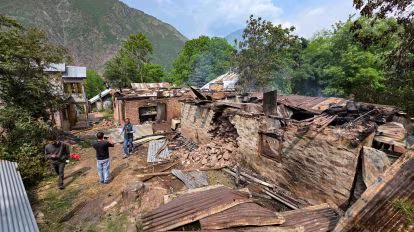Introduction
In recent weeks, cross-border shelling between India and Pakistan has escalated, especially in the Kashmir region. The shelling has caused significant destruction, affecting both the environment and civilians. In this blog, we will explore the devastating impacts of shelling in Indian-administered Kashmir. Learn more about the UN’s involvement in Kashmir peace efforts.
1. Loss of Lives and Property
One of the most tragic consequences of the shelling is the loss of innocent lives. In the small village of Salamabad, several homes were destroyed overnight, and many civilians were forced to flee in fear for their lives. The destruction of homes, businesses, and local infrastructure has left many people displaced. You can explore detailed reports on Kashmir’s loss of life here.
2. Humanitarian Crisis
The ongoing shelling has worsened the already dire humanitarian situation in the region. People are left without access to basic necessities such as food, water, and healthcare. The absence of proper safety measures and government response has exacerbated the suffering of the local population. The International Committee of the Red Cross has been providing humanitarian aid to those affected.
3. Economic Impact
The damage caused by shelling has disrupted local economies. Farmers, shopkeepers, and other business owners have been particularly affected as their properties were destroyed or rendered inaccessible. This will have long-term effects on the region’s economic stability. According to reports from the World Bank, the economic impact of conflict in Kashmir is significant and long-lasting.
4. Increased Tensions Between India and Pakistan
The escalation of shelling is part of a broader pattern of tension between India and Pakistan, both nuclear-armed nations. The exchange of artillery fire further strains diplomatic relations and heightens the risk of military confrontation between the two countries. You can read more about the historical context of India-Pakistan relations here.
5. Impact on Education and Healthcare
In addition to the destruction of homes, local schools and hospitals have also been damaged. This hampers the ability to provide essential services to the population, particularly affecting children and the elderly who rely on healthcare and education. The UNICEF India continues to focus on the needs of children and families affected by conflict in Kashmir.
6. Displacement of Civilians
The violence has caused widespread displacement. Hundreds of families have fled their homes to seek refuge in safer areas. This displacement has led to overcrowded shelters and limited access to resources. The International Rescue Committee has been aiding displaced populations in India.
7. International Call for Peace
As the violence intensifies, international organizations and governments are urging both India and Pakistan to cease hostilities and seek peaceful resolutions. The world is watching closely, and there is growing concern about the potential for further escalation. For real-time updates on international efforts for peace, refer to CFR’s analysis on India-Pakistan peace talks.
Conclusion
In conclusion, the impact of cross-border shelling in Kashmir is far-reaching and devastating. The loss of lives, destruction of property, and the subsequent humanitarian crisis highlight the urgent need for peace in the region. It is imperative that both India and Pakistan take steps to de-escalate tensions and prioritize the safety of civilians. Stay informed by following the latest news on Kashmir conflict.
Call to Action: Stay informed about the latest developments in the Kashmir conflict and support efforts for peace in the region. Share your thoughts with us below!


